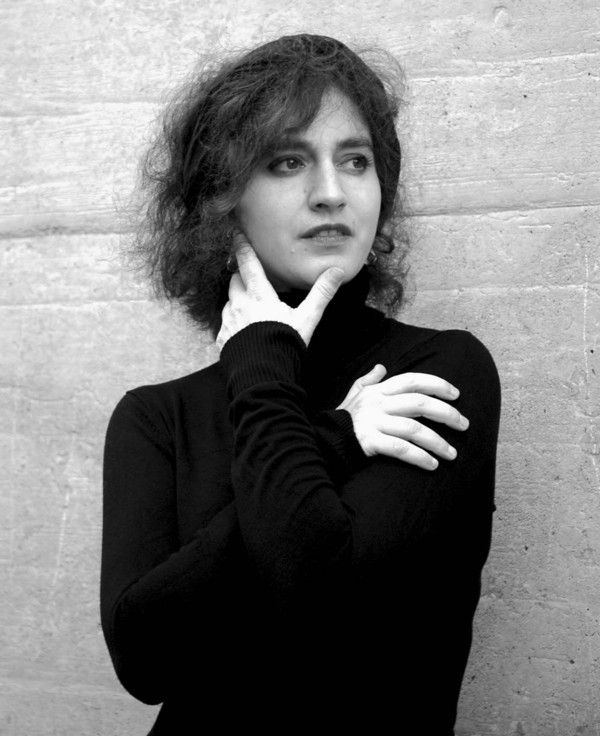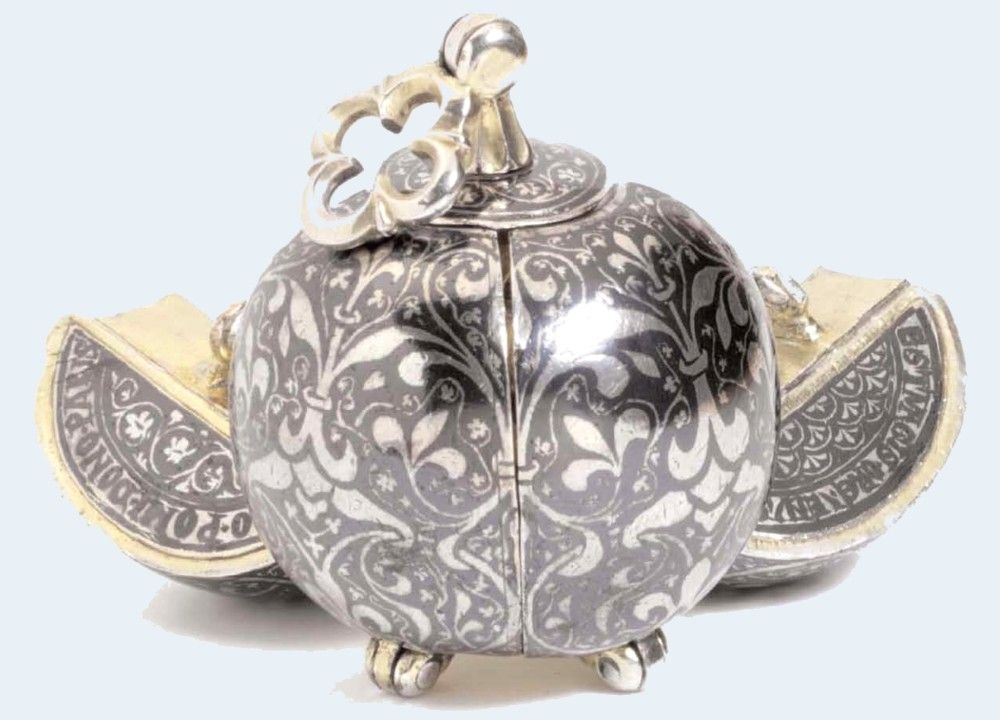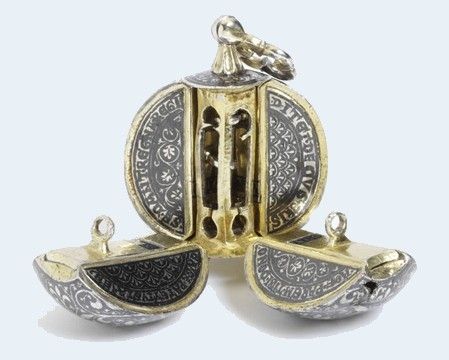I dilettosi fiori / Corina Marti
Musik des Trecento für Clavisimbalum und Flöten

medieval.org
ramee.org
lamorra.info
Ramée 1108
2012
Don PAOLO da FIRENZE
1. Era Venus [2:20]
Pit, f. 54v-55r
2. Aquila altera [3:42]
Fa, f. 73r-74v
after JACOPO DA BOLOGNA. Aquila altera /
Creatura gentil / Uccel di Dio
3. Indescort [3:40]
Fa, f. 36r-36v
after En discort
GHERARDELLO da FIRENZE
4. Per non far lietto [4:35]
Sq, f. 29v
5. [untitled piece] [3:50]
Fa, f. 93r-94r
···
6. Ghaetta [6:14]
L, f. 55v-56r
7. Non na elso amante [2:14]
Fa, f. 78r-79r
after JACOPO da BOLOGNA. Non al suo amante
···
8. Saltarello [5:01]
L, f. 62r
9. La dolçe sere [2:58]
Fa, 71r-72r
after BARTOLINO da PADOVA. La douce cere
10. [Un fior gentil] [3:03]
Fa, f. 82r-82v
after ANTONIO ZACHARA da TERAMO. Un fior gentil
···
11. Chominciamento di gioia [6:49]
L, 56r-56v
···
12. [Rosetta] [4:25]
Fa, f. 50v-52r
after ANTONIO ZACHARA da TERAMO. Rosetta che
non canbi may colore
13. [Ave maris stella] [2:12]
Fa, f. 96v-97r
after Gregorian hymn
14. [untitled piece] [2:26]
Fa, f. 49v
···
GUILLAUME de MACHAUT
15. Quant je suis mis au retour [1:40]
Machaut A, f. 485v
16. In perial sedendo [5:13]
Fa, f. 74v-774
after BARTOLINO da PADOVA. Imperiale sedendo
GUILLAUME de MACHAUT
17. Puis que ma dolour [2:41]
Machaut A, f. 483v-484r
18. Che pena questa [4:57]
Fa, f. 79v-80v
after FRANCESCO LANDINI. Che pena é
quest' al cor
···
19. Saltarello [1:26]
L, f. 62v-63r

CORINA MARTI
clavisimbalum Andreas Hermert
recorders Monika Musch, Ernst Meyer
double recorder Monika Musch
SOURCES
Faenza, Biblioteca Comunale, MS 117 [Fa]: tracks 2, 3, 5, 7, 9,
10, 12-14, 16, 18
London, British Library, MS Add. 29987 [L]: tracks 6, 8, 11, 19
Paris, Bibliothèque nationale, fonds italien 568 [Pit]]:
track 1
Firenze, Biblioteca Medicea-Laurenziana, Palatino 87 [Sq] :
track 4
Paris, Bibliothèque nationale, fonds français 1584 [Machaut
A] : track 15, 17
COMPOSERS
Nothing is known of the composers of the instrumental pieces.
The composers of the vocal originals are:
Guillaume de Machaut: * Reims or Machault, Champagne, c. 1300;
† Reims, April 1377
Jacopo da Bologna: fl. northern Italy, 1340-?1386
Gherardello da Firenze: * c. 1320-25; † Florence, 1362 or
1363
Francesco Landini: * ?Fiesole or Florence, c. 1325; †
Florence, 2 September 1397
Bartolino da Padova: fl. Padua and ?Florence, c. 1365-1405
Antonio Zachara da Teramo: * c. 1350-60; † after 1413
Don Paolo da Firenze: * Florence, c. 1355; † Florence,
after 20 September 1436
Recorded in April, 2010 at the church of Notre-Dame de l'Assomption,
Basse-Bodeux, Belgium,
and in March, 2011 at the Heilig-Kreuz-Kirche, Binningen, Switzerland
Artistic direction, recording & mastering: Rainer Arndt
Editing: Ricardo Rapoport, Rainer Arndt
Production: Outhere
Graphic concept: Laurence Drevard
Design & layout: Laurence Drevard (cover), Catherine Meeùs
(booklet)
Cover: Pomander, partially gilded silver, niello, Italy c. 1350
(by courtesy of Victoria and Albert Museum, London)
Photos: © V&A Images (cover), © Michal Gondko (p. 6)
www.outhere-music.com
OUTHERE 2012
RAM 1108
www.ramee.org

PIÙ BEL SUON DI QUEL MAI NON VEDUTO
It was as in a dream: around Christmas time, 1420, some young noblemen
and women gather for a party that would last for many days, at the
court of Pierbaldo, lord of Buongoverno. They feast and indulge
themselves, contrive games to pass the time happily, hunt, dance, sing
and play. Alongside the sweet and savoury delicacies, musical
instruments are produced in an unending abundance to provide the most
beautiful music. The party proved so magnificent and sumptuous to such
a stunning degree, that one enchanted participant finally cried out: "Più
bel suon di quel mai non veduto" – I have never seen a more
beautiful sound than this. And it was a dream: the supposed chronicler
of the feast was a poet, Simone Prudenzani d'Orvieto (c. 1355 –
shortly after 1440). The scene is created entirely in his imagination,
and he presents it in the form of a vast series of sonnets entitled Il
Saporetto (literally "the sauce"). He has a certain Buonare, a
fictitious old friend of Pierbaldo, describe in a complex, dream-like
construction the "world of pleasure" (mundus placitus), as his
son – the young courtisan Solazzo (literally "buffoon" or
"jester") – experienced it at Pierbaldo's court. But was it really
only a dream? Prudenzani's poem is certainly no historic record, and is
characterised by an hyperbolic mode of expression: the dishes described
are as numerous as the musical instruments, and the titles of the
pieces mentioned agree with those transmitted in compositions found in
manuscripts dating from the beginning of the 15th century. Prudenzani's
cribbing of titles even follows the alphabetical listings in those
sources. Nevertheless, his robust description, rich in detail, reflects
contemporary courtly musical practice, and is inspired by a foundation
based in reality. So, the revels of Solazzo and his friends are not
simply a dream...
The way that instruments are used is certainly a particularly
interesting component of Prudenzani's luxuriant presentation. Although
his enumeration is virtually an inventory – he lists all sorts of
ancient instruments, including bowed and plucked string instruments (arpa,
liuto, chitarra, cetera, rubebe, vivola), wind instruments (pifero,
fiauto), keyboard instruments (organi, menacordo), and those
producers of sounds that are today often looked down upon as "folk
instruments" (sampognia, pigniatta) – it becomes clear
that the compositions mentioned were not only played, but also sung.
The poet informs us, for example in sonnets 28 and 29, that one
evening, after Vigils, certain sacred pieces were played first on the
organs ("orgheni"), but then some "jolly sounds" (de'- suoni
ylarii) rang out. He goes on to list a series of titles that have
survived in manuscripts as vocal compositions – such as the
madrigal Alba columba by Bartolino da Padova, the anonymous Du'ançoliti,
or the virelai La harpe de melodie by Jacob Senleches.
Equivalent purely instrumental realisations of vocal music are equally
attested to by some other, rare sources – above all by the
celebrated Codex Faenza, named after the town where it is now
kept (Biblioteca Comunale, Ms. 117). This vast parchment manuscript was
created at almost the same moment as Prudenzani's poem, somewhere
between 1410 and 1420 in northern Italy. Apart from some musicological
texts added only a few decades later, it contains some fifty pieces of
music notated in a particular manner now interpreted to be a keyboard
tablature. It is a notation on two systems, to be read at once, where
the pieces – identified only by their incipit (the song texts are
absent) – are written down in two parts. The lower part generally
corresponds exactly to the tenor of the original vocal version with its
longer note values, while the upper part carries a higher line, often
very ornate. In principle, this is similar to keyboard notation still
in use today, with its left-hand/right-hand division, and could thus
concur exactly with the performance practice described by Prudenzani,
that of also playing vocal music on the keyboard. This seems all the
more probable as Prudenzani mentions pieces of music that appear as
well in the Codex Faenza, such as the madrigal by Jacopo da Bologna,
which has given this recording its poetic title: "I' mi son un che
per le frasche andando, / Vo' pur cercando dilettosi fiori, / per far
girlanda a mi de novi odori." (I am one who wanders in the
countryside, always searching for delightful flowers, with which to
make garlands of new fragrances).
For which keyboard instruments was the keyboard music in the Codex
Faenza conceived? Prudenzani sets out a list of several different
types: alongside organs with no precise specification ("orgheni"),
he cites "organi framegni", that is, Flemish organs. This could
mean a so-called organetto, a small portative organ placed on
the lap, and played with one hand while the other worked the bellows.
In an inventory of the Medicis in 1456, a difference is made between "uno
orghano di canne a due mani" (a pipe organ for two hands), and "uno
orghano fiammingho a una mano" (a Flemish organ for one hand).
Further on in Prudenzani's text, mention is made of a "menacordo",
meaning a clavichord, a keyboard instrument in which the strings are
made to vibrate with a mechanism of tangents. Mention of another
keyboard instrument is possibly made, hidden away in one of the
manuscripts in which Il Saporetto has survived: alongside the "sampognia"
(bagpipe) it alludes to the apparently alternative name for a keyboard
instrument "con la cecchola" (sonnet 31). The term "cecchola",
documented nowhere else, could mean the instrument called several times
"exchiquier" (chekker) in 14th- and 15th-century texts.
This seems to be – based on the visual resemblance of the
instrument's rectangular case to an abacus or chessboard – the
earliest known designation of a stringed keyboard instrument. Our
attention is thus drawn to a particular musical instrument regarded as
an "invention" around 1450. A certain Hermann Poll, from Vienna, who
studied (notably) at Padua, became a doctor of medicine there in 1398,
and was making a rapid career at the court of Rupert III, Elector
Palatine, then German king from 1400, was hanged in 1401 at the age of
31, during the Diet of Nuremberg, for hatching a plot to murder his
sovereign. In a contemporary record of these events, he is referred to
as "optimus musicus in organis et in aliis quibusdam instrumentis
musicalibus" (an excellent musician on the organs, and certain
other musical instruments). And a few years before that, in 1397, it is
reported in a letter on the subject of the promising young man of
Padua, that he was the inventor of a musical instrument he called a "clavicembalum"
("inventor unius instrumento, quod nominat clavicembalum"). This
name is derived from the Latin "claves" (key), and "cimbalum",
which in mediaeval Latin means bell, simultaneously referring to that
which is called "cymbales" in the Psalms. What is meant here is an
instrument activated by keys, and where the strings are sounded by a
plucking mechanism. The association with the term cymbales is perhaps
explained by its clear, bell-like timbre.
Even if Hermann Poll's "invention" of the instrument remains debatable
– mention is made as early as 1388, in a letter of the king of
Aragon, of a "sturment semblant dorguens que sona ab cordes"
(an instrument resembling an organ, sounded with strings) – by
the beginning of the 15th century, evidence of a keyboard string
instrument, both in text and image, increases markedly. The reason for
its success surely lies above all in the fact that it perfectly fulfils
the desire for one person to be able to play multiple-voice
compositions, as well as reflecting the gradually growing domestic
musical culture, one in which educated people spent their leisure time
"playing music for oneself", as opposed to "having music played for
one" at court. An important piece of evidence about the milieu in which
this predecessor of the harpsichord was played is contained in a
collection of manuscripts dating from the beginning of the 1440s, today
conserved in Paris (Bibliothèque Nationale, f.lat. 7295). It was
made by Henri-Arnaut de Zwolle (d. 1461), doctor, astronomer and
astrologer, in the service of the Duke of Burgundy from 1432 – a
typical intellectual of his epoch, one that displayed a growing
interest in the mechanical arts. Alongside essays, designs for tools
and machines, and astronomical tables, are plans and notes about
various muscial instruments, including a "clavisimbalum" (which
also served as the model for the instrument built for this recording).
Arnaut de Zwolle's clavisimbilum displays a wing-shaped case
with a prominent keyboard with a range of a little more than three
octaves. The manuscript gives no indication of actual measures, only
proportions, and seems to describe a 4-foot instrument (that is,
sounding an octave higher than the layout of the keyboard suggests).
The author also describes some very different mechanisms for sounding
the strings: along with various methods of plucking (among others with
plates of brass, or tongues of horn), there is a system for striking
the strings, 250 years before the invention of the fortepiano! In the
mechanism chosen for our reconstruction – plucking the strings
with quill-tips ("pluma") – the jacks are firmly connected
with the key levers by a snap closure. Therefore there is no batten
above the strings to stop the jacks, and also no damping. These
features taken together – a high register, metal strings and free
resonance – explains the "marvellous sweetness" (mire
suavitatis) of the instrument, praised at the time, among other
characteristics, for being "more sweet and sonorous" (quod dulcius
et sonorosius sonat) than a clavichord – according to Paulus
Paulirinus in about 1460.
The songs mentioned by Prudenzani in Il Saporetto are often
complex compositions, featuring elaborate text settings. One could even
go further in thinking that these songs are a particular form of text
declamation, a sort of musical interpretation of the text. If, however,
the songs are only performed instrumentally, then the textual level
disappears, leaving only the musical envelope. It could certainly be
imagined that, within the erudite circles of those that would have
played this music, a sufficient level of musical knowledge permitted
association of the text with the music. Considering the instrumental
versions notated in the Codex Faenza, however, the music seems
to have developed into a form of its own. The incipits are missing for
a number of the pieces, rendering it impossible to identify the vocal
original. The complicated internal repetition forms of the original
madrigals and ballate are here no longer taken into account
– the pieces generally proceed simply from the beginning to the
end. Moreover, the ornaments and diminutions in the upper voice are
often so rich and dense as to render the recognition of the original
melody impossible. This is the case, for example, in Jacopo da
Bologna's Aquila altera, originally a madrigal with three texts
sung simultaneously (Aquila altera / Creatura gentil / Uccel di Dio)
– an elaborate song of praise, addressed perhaps to Gian Galeazzo
Visconti, which includes subtle allusions to Dante's Divine Comedy.
It is impossible to hear this in the intabulation, as also in the
complex ballata, Un fior gentil m'apparse by Antonio Zacara da
Teramo, included in the Codex Faenza, but lacking any mention of its
source. Another example would be the French ballad A discort sont
désir et espérance based on Guillaume de Machaut's Se
ma dame n'en fait brief-ment l'acort, unrecognisable in Indescort
in the codex, even if it were possible to guess the original vocal
version; or Imperiale sedendo fra piú stelle by
Bartolino da Padova, which appears as In perial sedendo in the
codex. In this way, the intabulations achieve their own
musical-instrumental dimension. The dialogue between the two parts, as
well as the upper voice's turns of phrase – now playful, now
audacious – are thus in service of a pre-ordained plan, and the
original melodic basis fulfils only a structural function. But once
this construction is discovered, it holds a special charm for the
connaisseur, whether player or auditor.
One evening, a "pifero venuto da Flandra" (wind-instrument
player come from Flanders) was invited to Pierbaldo's court, to play
for the dancing. Perhaps this "Flemish minstrel" actually played a
flute, although the name "pifero" really meant at the time
nothing more precise than any player of any common woodwind instrument.
But on another occasion, it was the turn of "un bon fiauto",
and in this case it seems certainly to mean a recorder, an instrument
often represented in iconography, some surviving examples being
preserved as archeological discoveries. The double flute – a
recorder of two parallel pipes that permits limited two-part playing,
the lower part, however, going beyond a simple drone – only
survives in iconography. All this lends the dream described above an
acoustic dimension, and furnishes the court of Pierbaldo imagined by
Simone Prudenzani with an unprecedented sound-world. Taking our cue
from those dreamy revels, we could almost say we never yet heard such a
beautiful image...
Martin Kirnbauer
Translation: Will Wroth




